
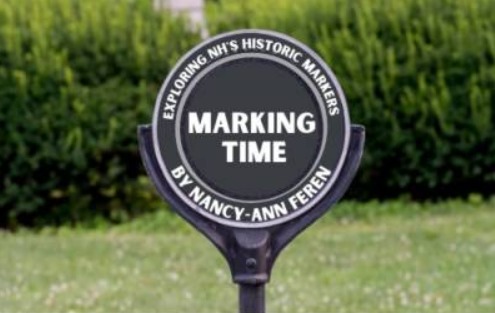 We started our tour of the White Mountains at Franconia’s Stone Iron Furnace. I never realized that New Hampshire had mined iron ore and I was interested to read that this furnace is “New Hampshire’s sole surviving example of a post-Revolutionary furnace for smelting iron ore. The industry flourished during first half of 19th century. It produced pig iron and bar iron for farm tools and cast iron ware, including famous ‘Franconia Stoves’”. There is a small museum with iron products and panels explaining the process but it was not open when we were there. There is also a short nature trail along the Gale River.
We started our tour of the White Mountains at Franconia’s Stone Iron Furnace. I never realized that New Hampshire had mined iron ore and I was interested to read that this furnace is “New Hampshire’s sole surviving example of a post-Revolutionary furnace for smelting iron ore. The industry flourished during first half of 19th century. It produced pig iron and bar iron for farm tools and cast iron ware, including famous ‘Franconia Stoves’”. There is a small museum with iron products and panels explaining the process but it was not open when we were there. There is also a short nature trail along the Gale River.
The Blair Bridge over the Pemigewasset River in Campton is 292 feet long. The first bridge here was built in 1829 at a cost of $1000. It was burned down by an arsonist and before it could be replaced a doctor who was trying to cross the river on horseback found the current too strong. He survived but the horse died. The current bridge was built in 1870. It was damaged during Hurricane Irene in 2011, causing $2.5 million worth of damage.
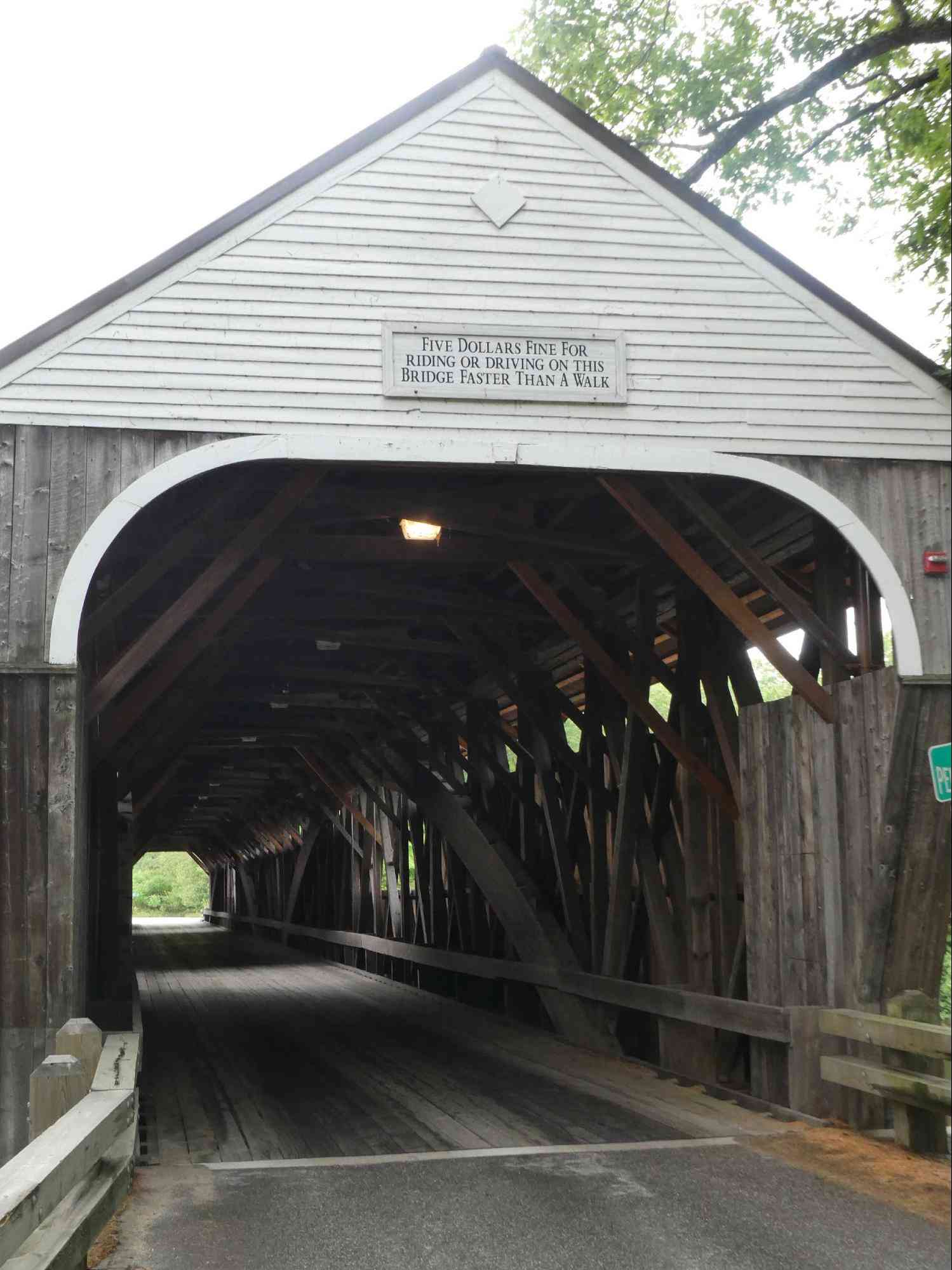
The first ascent of Mount Washington is noted on a marker in Pinkham’s Grant. “Darby Field, a New Hampshire settler, accomplished the difficult feat in 1642 from a southerly approach. Partly guided by Indians and with only primitive equipment at his disposal, he is thus alleged to be the originator of all Mount Washington ascensions.” When we got out of the car to take pictures we discovered a huge field of wild blueberries. We were camping in the White Mountains on this trip and happily spent some time picking blueberries for the next morning’s breakfast of blueberry pancakes.
The Mount Washington Cog Railway is the second steepest and the oldest cog railway still in operation in the world. The original locomotive, which was nicknamed ‘Old Peppersass’, was designed to build the railroad. It first reached the summit on July 3, 1869, and continued to provide passenger service until 1878. The original engines were wood-fired; they were replaced by two coal-fired steam locomotives which were manufactured in Manchester at the Manchester Locomotive Works in 1875 and 1908. As of 2008, the engines are diesel-powered. ‘Old Peppersass’ is on display at the base station for the Cog Railway in Bean’s Grant. (We had never heard of Bean’s Grant—the website for the Cog Railway says it is in Bretton Woods.)
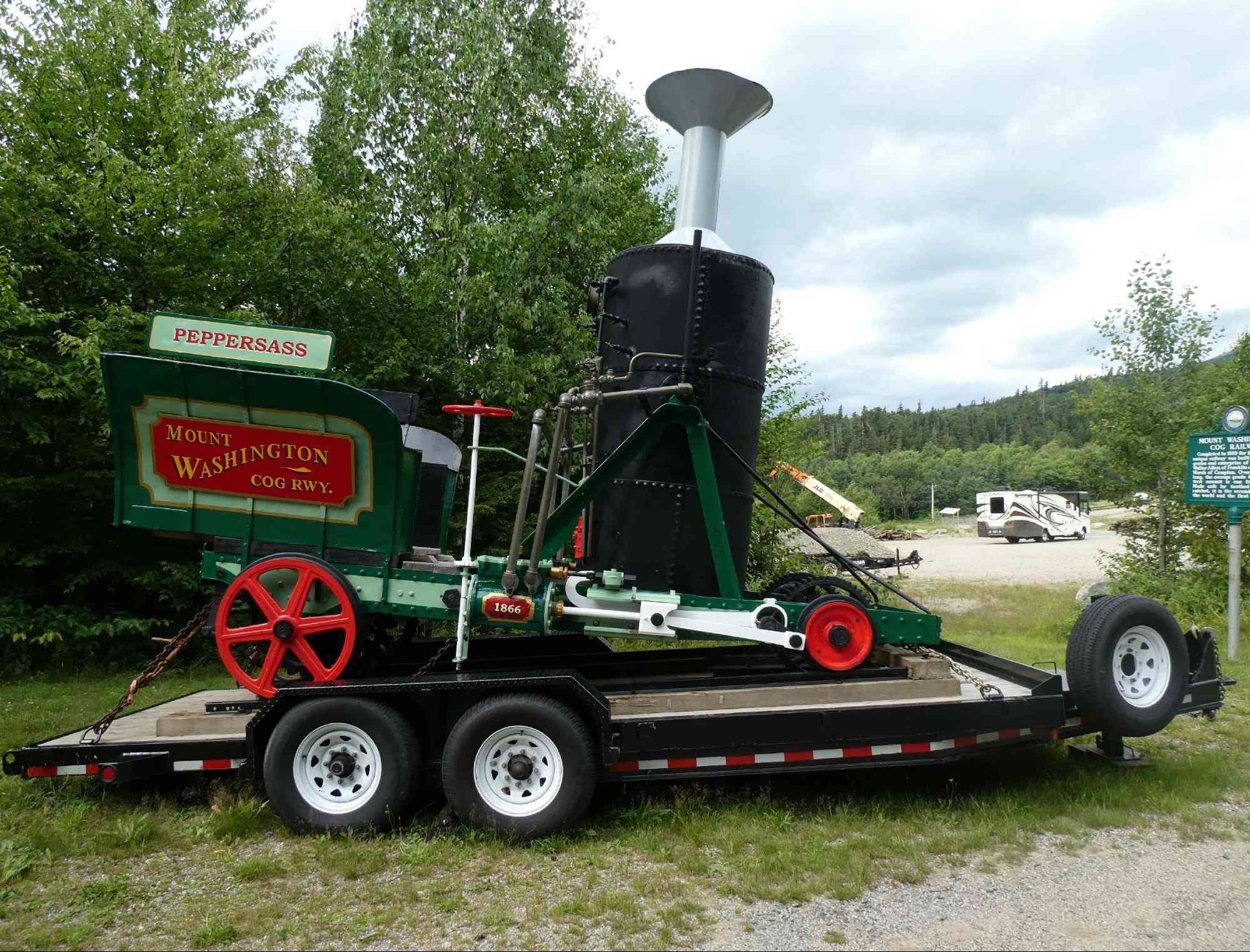
One of the newer markers, installed in 2018 in Bethlehem, is for “Frances Glessner Lee (1878-1962) ‘Mother of Forensic Science’. Here at the Rocks, her family’s summer estate, this Chicago heiress pursued her passion for criminology in the 1940s-50s with the creation of 20 miniature dioramas depicting actual crime scenes with detailed accuracy…and were used to train homicide detectives.” Today the Rocks is a popular Christmas Tree Farm and a place to learn about the history of maple sugaring.
We stopped in Carroll to read the marker about the Crawford House. The original house was built in 1829 and two others were built after that. All three, used as inns for tourists to the White Mountains, were destroyed by fire. The Appalachian Mountain Club Highland Center located here now was built in 2007.
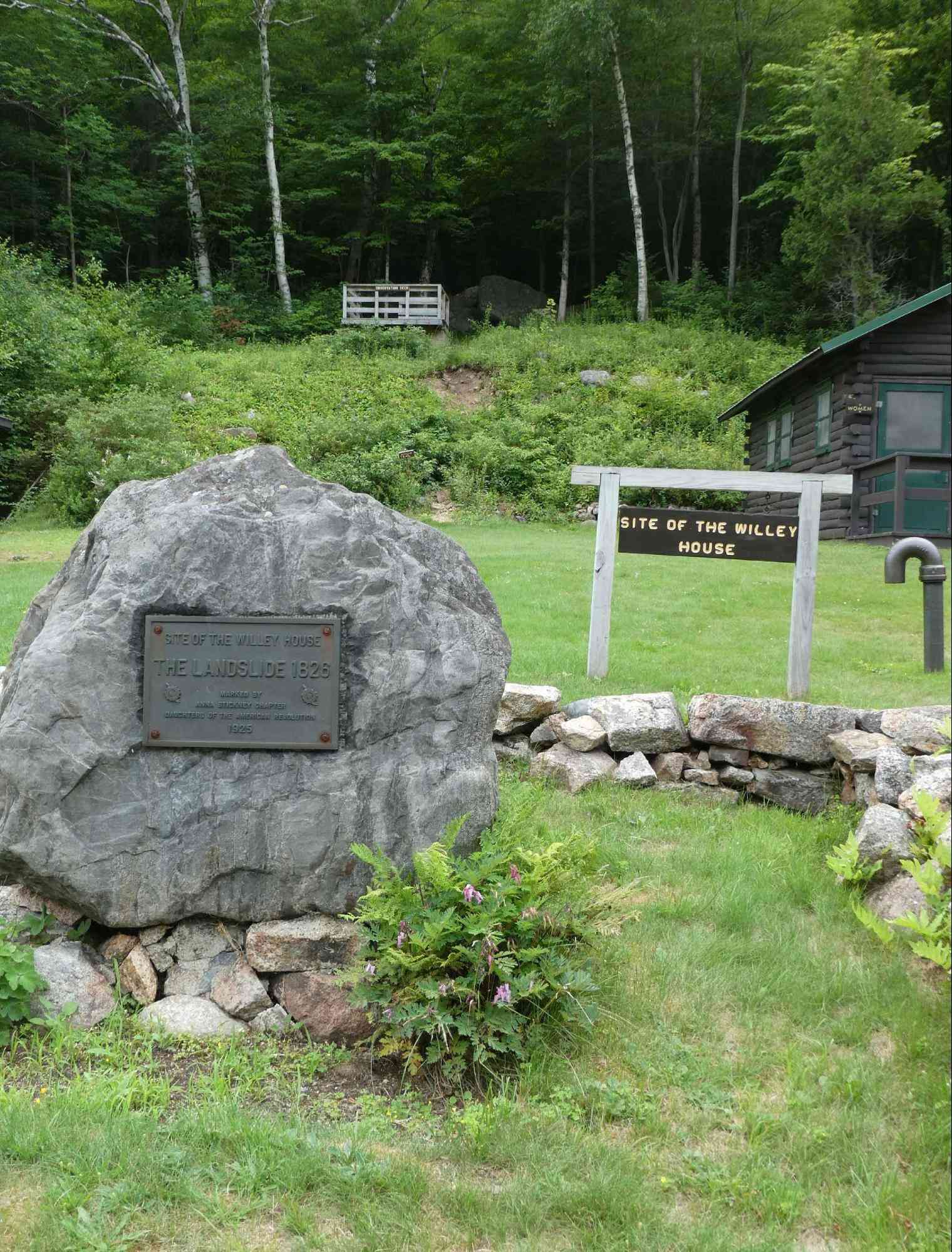
A bit farther down the road we stopped at the location of the Willey House. It does not have an historical marker but has an interesting history. The house was built in 1793 as a residence and an inn. Samuel Willey bought the house in 1825 and soon discovered that it was located at the base of a steep cliff and therefore susceptible to landslides. One landslide narrowly missed the house in June 1826. The family, fearing another landslide would destroy their home during a heavy rainstorm in August, left the house and ran into the path of the slide. All seven family members and two hired workmen were killed; the house was undamaged because a low ledge right behind it split the landslide into two channels which went on either side of the house. This disaster gained national attention; the publicity brought many tourists to Crawford Notch to see the house and debris.
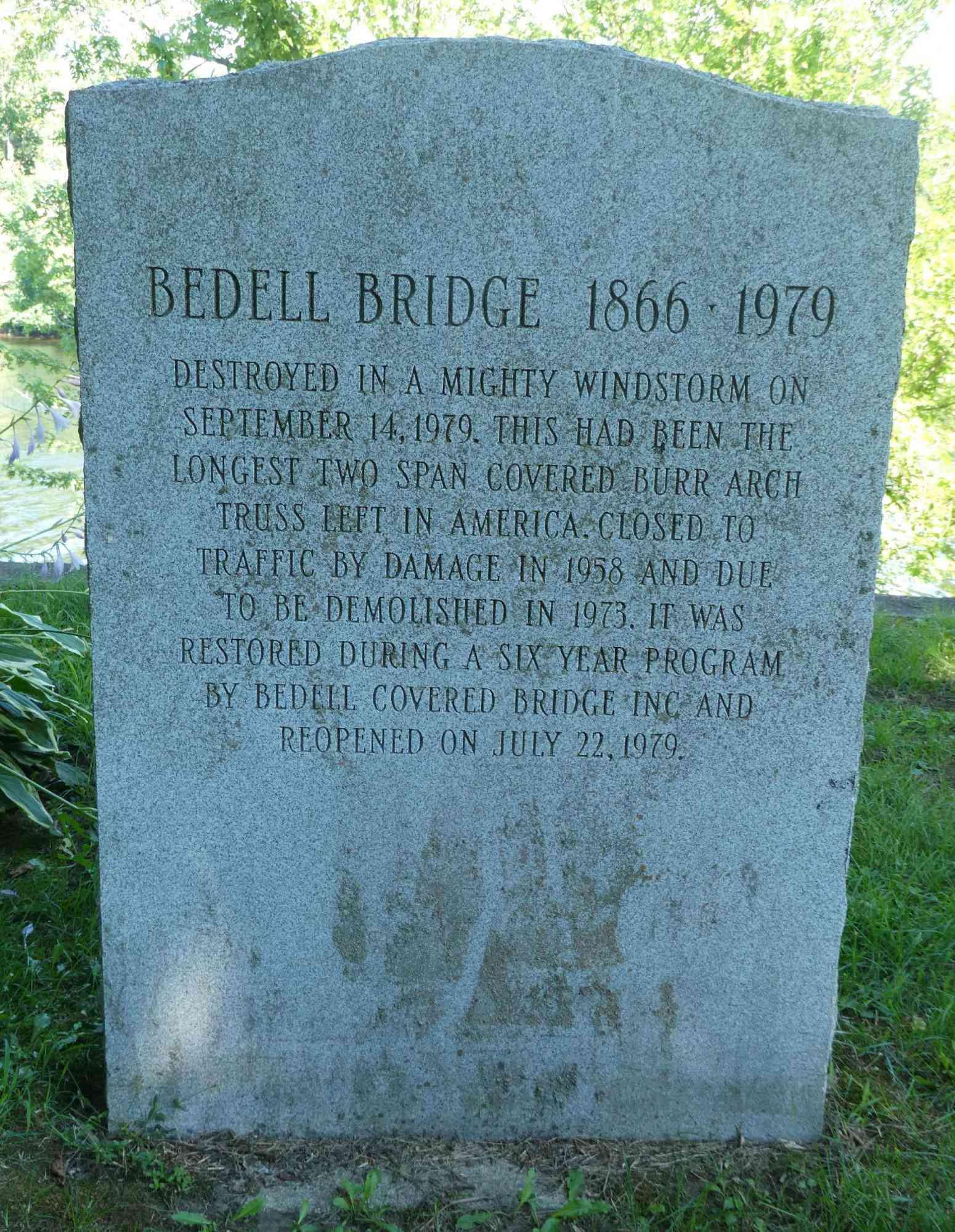
There are two more markers in Carroll, both associated with the Mount Washington Hotel. The hotel itself “was completed in 1902 as one of the largest, most modern grand hotels in the White Mountains … Served by as many as 57 trains a day, the Mount Washington Hotel became known as one of the most luxurious summer resorts in the United States.” The second marker tells about the Bretton Woods Monetary Conference. “This site in the town of Carroll, named ‘Bretton Woods’ in 1903 to recall the original land grant of 1772, was chosen in July 1944 as the location of one of the most important meetings of the 20th century. Convened by the allied nations before the end of WWII and attended by representatives of 44 countries, the Bretton Woods Conference established regulations for the international monetary system following the war. The conference created the International Monetary Fund and the future World Bank and linked the exchange rate of world currencies to the value of gold.”

I think my favorite marker is the one in Bath: “Settled in 1766 by Jaasiel Harriman whose cabin was near the Great Rock. His nine-year-old daughter Mercy carried dirt in her apron to the top of this unique rock formation. Here she planted corn, pumpkins, and cucumbers, making the first garden in town.” I love the fact that this garden is still maintained by the Bath Historical Society. There is a small sign leading visitors to Mercy’s path. It is a short walk to the rock where you can climb a ladder to the top.

Not far from here is The Haverhill-Bath Bridge which was built over the Ammonoosuc River in 1829 It is one of the oldest covered bridges in the United States. Today it is open only for foot traffic.

The Bedell Bridge, which was located in Haverhill, is marked by a tombstone.“Following several years of human effort which corrected decades of deterioration, the newly-restored landmark was destroyed by a violent windstorm on September 14, 1979.”

When we stopped to read about the Granville Homestead in Madison, we discovered another spot that does not have an historical sign but is definitely worth visiting. Preserved in The Madison Boulder Natural Area is the largest known glacial erratic (a boulder which was transported by glacial ice and deposited on bedrock of a different type) in North America and one of the largest in the world. It’s impressive and worth the short walk from the parking lot to see it.
A stone iron furnace, rivers, bridges, giant boulders, mountains, beautiful scenery, fascinating history—there is a lot to enjoy in New Hampshire’s White Mountains.

 Nancy-Ann Feren is a native of Manchester, and a graduate of Machester Central High School. She has a BA from Wellesley College and MAT from the University of New Hampshire. She is a retired Manchester teacher and the author of Not Your Average Travelers: 40 Years of Adventures in All the U.S. National Parks. She and her husband have traveled to all 50 states (48 of them with their 3 children) and to all 7 continents. She can be reached at nferen@comcast.net
Nancy-Ann Feren is a native of Manchester, and a graduate of Machester Central High School. She has a BA from Wellesley College and MAT from the University of New Hampshire. She is a retired Manchester teacher and the author of Not Your Average Travelers: 40 Years of Adventures in All the U.S. National Parks. She and her husband have traveled to all 50 states (48 of them with their 3 children) and to all 7 continents. She can be reached at nferen@comcast.net







